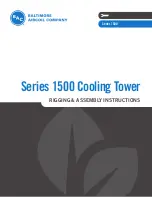
3
|
Third party components
Service manual
130
FTXF20~71A + FTXF20~25B + FTXF20~42C + ATXF20~71A + ATXF20~42C
+ RXF20~71A + RXF20~60B + RXF20~42C + ARXF20~71A + ARXF20~42C
Split Sensira R32
ESIE18-12E – 2021.02
To check if the refrigerant circuit is clogged
Prerequisite:
Visually check if the refrigerant liquid/gas pipes between the indoor
and outdoor unit are NOT squeezed or bended into too short radius.
Prerequisite:
Stop the unit operation via the user interface.
Prerequisite:
Turn OFF the respective circuit breaker.
1
Wait for the refrigerant to reach the outdoor temperature.
2
Connect a manometer to the service port.
3
Turn ON the power of the unit.
4
Activate
Heating
operation via the user interface.
5
Read the pressure on the pressure gauge. If, at the start of the unit operation,
the pressure is high or very low, the refrigerant circuit might be clogged.
6
On the refrigerant liquid piping (between the indoor unit heat exchanger and
the outdoor unit heat exchanger (coil)), using a contact thermometer,
measure the temperature before and after every restricting device. If a big
temperature difference is measured (>2.5~4K), an internal pipe obstruction
may be present at this location.
INFORMATION
Focus on positions with a potential risk for clogging such as:
▪
Filters
▪
Valves
▪
Brazing points
▪
…
INFORMATION
A bigger temperature drop before and after the expansion valve can be normal,
however excessive ice is indicating a malfunction of the expansion valve or internal
obstruction of the valve (dirt or ice build up in case of humidity in the system).
Temperature drop found?
Action
Yes
Replace the clogged part, see
133].
No
Return to the troubleshooting of the
specific error and continue with the
next procedure.
To check if the refrigerant circuit is correctly charged
Due to the relationship to pressure control and electronic expansion valve control,
the amount of refrigerant needs to be examined according to operating conditions.
Refer to the procedures shown below for correct examination.
Refrigerant overcharge diagnosis
1
High pressure rises. Consequently, overload control is conducted to cause
insufficient cooling capacity.
2
The superheated degree of suction gas lowers (or the wet operation is
performed). Consequently, the compressor consumes more power and is
noisy (before over‑current relay trips).
3
The subcooling degree of refriferant in liquid form rises (values >4~5K are NOT
normal).
Содержание Sensira Series
Страница 169: ......
Страница 170: ......
Страница 171: ......
Страница 172: ...ESIE18 12E 2021 02 Copyright 2018 Daikin Verantwortung f r Energie und Umwelt...
















































